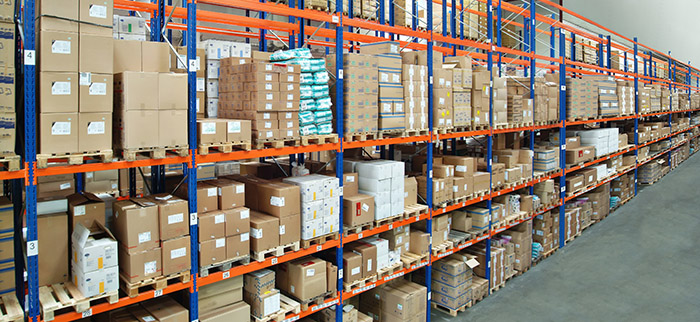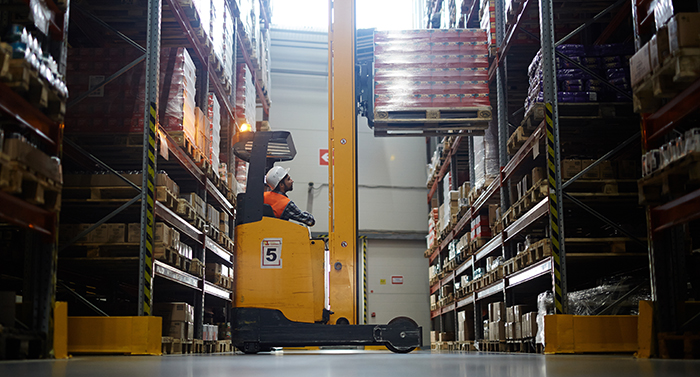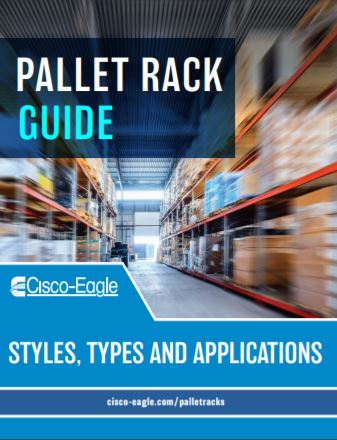Pallet Rack Safety Standards: What You Need to Know
A mixture of Federal, state and local codes

In some countries, pallet rack safety standards are much more rigorous and defined than in the United States. The U.S. lives in more of a gray zone, with overlap from multiple organizations and building code standards. However, safety is always a concern for warehouses or other facilities that use pallet racks, and a lack of standards hardly means a lack of accountability.
Even though the agency has no specific pallet rack rules, OSHA routinely cites companies for pallet rack safety issues under the general safety clause of the Occupational Health and Safety Act. As the clause states, “each employer shall provide a workplace that is free from recognized hazards.”
Even so, if you’ve been around long enough, you’ve seen obviously dangerous situations in a warehouse or three: bent frames, rusted components, racks being used without floor anchors or massively overloaded. When (and it is a matter of when) these racks fail, and if an injury occurs, the warehouse operator will receive a citation–and will deserve it. OSHA’s number one reason to cite companies for racks always relates to maintenance failures, installation flaws and repair issues.
If you look at a rack and wonder if it’s dangerous, it probably is–and you should address it.
What are some reasons companies are cited and fined under the general safety clause?
- Damaged rack components: When you see damaged, rusted, bent or contorted structural components, you should have them evaluated for safety by a qualified professional. Inspect your racks and document the results on a regular basis.
- Installation problems: Pallet racks are dangerous when installed incorrectly. If safety clips aren’t engaged, if uprights aren’t properly bolted to the floor, if the rack isn’t plumb and straight, it has a much greater chance to fail. Adhere to the standards of the manufacturers’ installation manuals.
- Specification problems: This tends to relate to capacities, but can also relate to loading patterns and placement. Racks are specified for specific loads in specific configurations. If you exceed their design, failure is inevitable.
- Inadequate cautions or training: Poor training or racks without posted capacities are good examples of this.
- Modified or repaired rack systems: If you modify your pallet rack without professional consultation, you’ll receive a citation for any resulting accident. Some examples are mixing rack components from multiple sources, using unrated fasteners or welding cross-members. If you repair your racks, use an approved repair kit or company. Read more: How to Safely Modify Your Pallet Racks
Other standards and code compliances
Aside from U.S. federal standards, building and fire codes can come into play depending on your location and governing body. RMI (the Rack Manufacturers Institute) has excellent guidelines on these standards and how to comply with them. Some of their guides can be purchased for relatively modest amounts, including:
- Planning and Use of Industrial Steel Storage Racks – RMI $50
- Guideline for the Repair/Replacement of Damaged Rack – RMI $50
- Planning and Use of Industrial Steel Storage Racks – RMI $50
- Canadian (CSA A344.17) User Guides for Steel Storage Racks – ANSI $89
Although they aren’t binding for American companies, the Canadian, British or Australian standards are comprehensive and are excellent guidelines.
Read more: Ways to Prevent Pallet Rack Collapses
Inspection is vital for safe operations

Even if no one is hurt, a rack failure can lead to litigation, fines, lost time, lost inventory and lost business. Those costs are likely more significant than any safety fines. Shutting down your operation to clean a mess or evaluate operational safety is extremely expensive. One of the most efficient, economical ways to ensure safety is to inspect your rack system.
Rack inspections aren’t compulsory in the United States, but they’re an excellent way to detect problems before they become dangerous. Inspections also help you document your commitment to safety in case of issues or litigation. OSHA section 25(1)(b) guidelines are clear that companies must ensure equipment is maintained and in good working condition.
Read more: Guide to Rack Inspections and The Warehouse Manager’s Guide to Walking Around
Proper loading is a critical safety moment

Assuming you’ve specified the right rack system and load it only within tolerance, the way you load it becomes critical. That includes guarding your uprights with post protectors, but should also include teaching–and maintaining–best practices for rack loading.
- Train your staff and actively manage the process. Placing and pulling loads on high-bay racks is a skill that must be learned. Make sure your forklift drivers are working the right way to help them be safe on the job. They should also receive training to find and report potential issues with the rack system.
- Train forklift drivers to line their loads up at the bottom level of a rack, then elevate their loads onto upper-level beams. They should have to do very little maneuvering to insert that pallet once they’ve raised the load to position, as the load itself creates a blind spot.
- Be sure your rack aisles provide guarding for upright frames, especially for high-traffic areas.
- Use available technology to help drivers see the load, the rack and their position more accurately.
Read more: How to Safely and Effectively Load & Unload Tall Pallet Racks
The most important standards are your own
Your company should have documented standards for rack safety and forklift usage. Creating standards of your own allows you to comply with internal safety processes and dramatically reduce pallet rack accidents. You’ll likely be in compliance with OSHA’s general safety clause, and you can take any local safety codes into account for the safety of your people.
Download our Pallet Rack Guide
Pallet rack enhances your warehouse and improves overall facility performance when correctly specified, laid out and installed for the right load in the right positions. Check out our guide to specifications, styles, accessories and applications with expert tips from our employee-owners. You’ll find quick, useful information on racks and how you can use them more effectively.
Download the guide today
Scott Stone is Cisco-Eagle's Vice President of Marketing with more than thirty years of experience in material handling, warehousing and industrial operations. His work is published in multiple industry journals an websites on a variety of warehousing topics. He writes about automation, warehousing, safety, manufacturing and other areas of concern for industrial operations and those who operate them.




